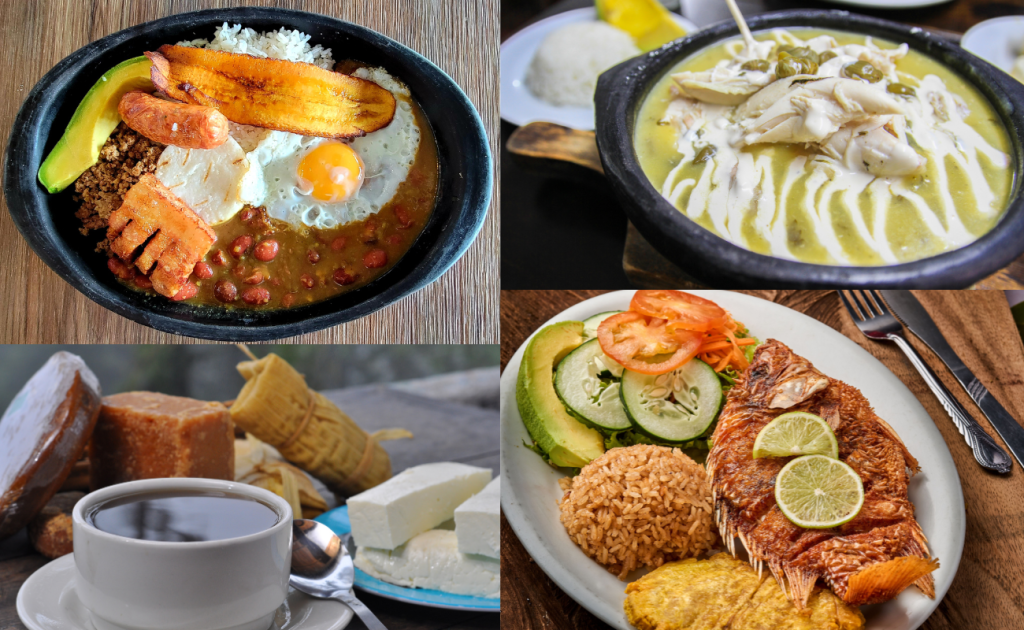Colombia, a land of undiscovered wonders and burgeoning opportunities, holds secrets beyond the reach of standard travel guides and investment brochures. Rich in culture, biodiversity, and economic potential, this vibrant South American nation offers more than meets the eye.
Knowing these facts about Colombia is beneficial and essential for expats dreaming of a new life and investors seeking fertile ground. This blog ventures deep into the heart of Colombia to uncover hidden treasures that paint a fuller picture of this dynamic country. From stunning natural wonders and unique cultural festivals to innovative business climates and culinary delights, each fact reveals a facet of Colombia that goes beyond the stereotypical narratives.
Join us on this enlightening journey, where each discovery invites you to explore, invest, and integrate into Colombia’s rich tapestry. Whether you’re considering making Colombia your new home or looking to diversify your investment portfolio, these insights will provide you with a solid foundation to appreciate the true essence of Colombian life and opportunity. Let’s embark on this adventure together and uncover the facts about Colombia that every expat and investor should know.
The hidden gems of tourism, one of the facts of Colombia
Beyond the Beaten Path
Venturing into the heart of Colombia reveals experiences untouched by the typical tourist trail. Discover the hidden gems that offer adventurers a unique glimpse into the country’s breathtaking diversity and rich cultural heritage.
Tucked away from the hustle and bustle, these secret spots capture the essence of Colombia’s stunning beauty and the spirit of exploration that captures the hearts of travelers seeking authenticity.
From the mystical allure of the Amazon’s pristine corners to the serene beauty of the Desierto de la Tatacoa lunar landscapes, Colombia’s lesser-known places promise the adventure of a lifetime. Imagine trekking through cloud forests to discover pristine waterfalls or exploring ancient archaeological ruins that tell tales of a long past. These experiences will not only enrich your trip but also bring you closer to understanding the facts of Colombia – a land of hidden treasures and untold stories.
Take a plunge into the tranquil waters of the Pacific coast, where humpback whales serenade you, or wander the cobblestone streets of small towns where every corner tells a story of heritage and tradition. These secret destinations offer a retreat into nature’s embrace and a journey back in time to a Colombia preserved away from the lights and noise of modern tourism.
Lastly, travelers who embrace these hidden gems will experience Colombia’s true soul, fostering a deeper connection with its landscapes, people, and stories. It’s here, off the beaten path, that the facts of Colombia come alive, revealing a country rich with wonders waiting to be explored. So pack your adventurous spirit, and let’s uncover the secrets of Colombian tourism, where every destination promises a story, a discovery, and an unforgettable memory.
Eco-tourism adventures in the heart of nature
Colombia, a country of biodiversity and natural beauty, is at the forefront of ecotourism. It offers a variety of destinations that satisfy the adventurous spirit while promoting the principles of conservation and sustainability.
Guatapé, with its iconic Piedra del Peñol, offers breathtaking views and a testament to the community’s dedication to preserving its vibrant culture and pristine landscapes. The journey here is as enriching as it is enlightening, highlighting the facts of Colombia’s rich palette of natural wonders.
The Amazon Rainforest, a vital lung of our planet, invites explorers into its heart with the promise of discovery and the opportunity to witness conservation efforts firsthand. This immersive experience in the world’s most diverse ecosystem is a vivid reminder of the importance of ecotourism in protecting our natural heritage.
Colombia’s Pacific Coast, a sanctuary for humpback whales and biodiversity, demonstrates the harmonious balance between tourism and conservation. The rhythm of life here flows with the tides, offering unique encounters with marine life and pristine coastal rainforests.
Also, the River of the Seven Colors, or Caño Cristales, is a dazzling display of nature’s artistry, where the riverbed blossoms into a tapestry of colors. This natural wonder, accessible only during certain months, symbolizes Colombia’s commitment to protecting its unique ecosystems through controlled ecotourism.
The Desert of the Tatacoa, with its otherworldly landscapes, offers a stark contrast to the lush greenery typically associated with Colombia. Here, eco-tourism ventures into the realm of the stars, with astronomy tours highlighting the desert’s significance as a natural observatory.
Lastly, the snow-capped Nevados in the Andes provides a challenging yet rewarding arena for eco-tourism. Hiking these ancient trails is not just a physical journey but a spiritual one, fostering a deep respect for the fragile ecosystems that thrive at high altitudes.
Colombia shares the facts of its natural wonders and its dedication to their preservation through these eco-tourism adventures. Each destination is a chapter in Colombia’s ongoing story of sustainable travel, inviting us to explore, learn, and contribute to conserving these magnificent landscapes.

Culinary journeys through Colombian cuisine
The diverse flavors of Colombia's regional dishes
Colombia’s culinary landscape is vibrant and full of flavors and traditions that reflect the country’s diverse geography and culture and one of the tasty facts of Colombia.
From the sun-kissed coastline to the towering Andes, each region boasts its specialties, creating a culinary mosaic that tantalizes the palate and enriches the travel experience. Coastal areas, with their bounty of the sea, serve up an array of seafood delights that capture the essence of the ocean. Dishes such as “ceviche” and “coconut rice with fried fish” reflect the harmony of coastal communities with the sea, offering fresh and flavorful experiences that are as refreshing as a sea breeze.
In the heart of the Andes, the cuisine takes on a comforting and hearty character, designed to warm the soul against the cool mountain air. Here, “ajiaco,” a traditional chicken and potato soup, and “bandeja paisa,” a platter of beans, meat, and accompaniments, stand as pillars of Colombian comfort food, showcasing the region’s agricultural wealth and culinary ingenuity.
Each dish tells a story of cultural fusion, local ingredients, and generational knowledge, vividly depicting Colombia’s rich cultural heritage through its cuisine. Exploring Colombia’s diverse flavors satisfies the appetite for adventure and deepens the connection to the country’s traditions and people.
As we journey through the facts of Colombia’s culinary landscape, we’ll be invited to sit at the table with locals, sharing stories and dishes that have shaped the nation’s identity. This culinary adventure is a testament to Colombia’s gastronomic diversity, offering a unique window into the heart of its regions and the soul of its people.
Colombia's coffee culture is more than just a cup
Coffee is more than a beverage; it’s a way of life, an art form, and a testament to the country’s rich agricultural heritage. Coffee Culture uncovers the traditions and innovations that have solidified its global reputation and explores the traditional drinks that warm the hearts of the locals.
In addition, coffee landscape is as diverse as its geography, with each region producing beans with a unique profile influenced by the microclimates of the Andean slopes. This diversity is celebrated in local traditions, where coffee is not only consumed but is a central part of social rituals and community gatherings. Here, coffee growing is a craft passed down through generations, and farmers take pride in their sustainable practices and the rich flavors they cultivate.
But Colombia’s beverage culture extends beyond coffee. Traditional drinks like hot chocolate with cheese, agua de panela, and chicha offer a glimpse into the country’s culinary diversity and its people’s innovation. Hot Chocolate with Cheese, a unique combination that may seem unusual initially, reflects Colombians’ love of combining sweet and savory elements to create a comforting experience in homes nationwide.
On the other hand, “agua de panela,” a simple yet nourishing drink made from unrefined cane sugar, embodies the simplicity and warmth of Colombian hospitality. It’s a testament to the country’s agricultural wealth and a staple in Colombian homes, reminding people of the simple pleasures in life.
Chicha, a traditional fermented beverage, has been part of Colombia’s cultural heritage for centuries. Its indigenous roots highlight the historical depth of Colombian cuisine. This drink varies in flavor and preparation from region to region and is a bridge to the past, offering a taste of Colombia’s ancestral traditions.
The facts of Colombia’s beverage culture are a testament to the country’s diversity and creativity, offering expats, investors, and travelers a taste of its rich culture and traditions.

Colombia's nature and adventure
Thrilling adventure sports in Colombia's varied landscapes
Colombia means diving headfirst into an array of exhilarating adventure sports, each offering a unique way to experience the country’s breathtaking landscapes and rich biodiversity. Colombia’s nature and adventure bring adrenaline-pumping activities, making the country a thrill-seeker’s paradise. Highlighting some facts of Colombia, we can find diverse landscapes offering unparalleled adventure opportunities.
Medellín, known as the City of Eternal Spring, is celebrated for its pleasant climate and as a premier destination for paragliding. Soaring above, the Aburrá Valley offers a bird’ s-eye view of the city, the lush mountains, and the intricate mosaic of rivers and streams that define the region. Gliding through the air with the world unfolding below is an exhilarating experience embodying Colombia’s landscapes’ freedom and beauty.
But the adventure doesn’t stop in the skies. Colombia’s Caribbean coast beckons with the promise of underwater exploration. Diving in crystal clear waters reveals a hidden world of vibrant coral reefs teeming with marine life and sunken treasures. Places like the Rosario Islands, San Andrés, and Providencia offer some of the best diving in the world, where the diversity of Colombia’s marine ecosystems can be fully appreciated.
Therefore, Colombia’s varied terrain offers a playground for various adventure sports, including paragliding and scuba diving. Whitewater rafting on the rapids of the Magdalena or Fonce rivers, mountain biking on the slopes of the Andes, and rock climbing in the Suesca Rocks are just a few examples of how the country’s natural wonders provide the perfect backdrop for heart-pounding activities.
From the Andes’ heights to the Caribbean’s depths, Colombia offers different terrains waiting to be explored, making it an ideal place for those who want to embrace the wild side of life.
Colombia's national parks: preserving natural wonders
Colombia’s extensive network of national parks exemplifies its commitment to preserving its natural wonders. These parks are sanctuaries for the country’s vast biodiversity and serve as a testament to the nation’s commitment to environmental conservation.
Each national park in Colombia is a gateway to explore the pristine beauty of the country’s diverse landscapes, from the snow-capped peaks of the Sierra Nevada de Santa Marta to the dense rainforests of the Amazon. These parks protect various ecosystems, each with its unique flora and fauna. For example, Chiribiquete National Park, often called the “Sistine Chapel of the Ancients,” is famous for its ancient rock paintings. It is an essential habitat for jaguars, pink dolphins, and countless species of birds and plants.
Moreover, Colombia’s commitment to conservation goes beyond protecting landscapes and wildlife. It takes a holistic approach, including research, sustainable tourism, and community engagement. By involving local communities in conservation efforts, Colombia ensures that the stewardship of these natural wonders is a shared responsibility, fostering a culture of respect and appreciation for the environment.
The Tayrona National Natural Park’s stunning Caribbean coastline, lush mangroves, and archaeological ruins exemplify Colombia’s commitment to combining ecological conservation with cultural heritage. Meanwhile, Cocuy National Park offers breathtaking views of glaciers and high-altitude ecosystems, demonstrating the country’s geographic diversity and the importance of protecting these fragile environments.
These national parks are not only areas of ecological importance but symbols of Colombia’s identity and heritage. Through its efforts to preserve these natural wonders, Colombia is sending a powerful message about the value of biodiversity and its critical role in our world’s ecological balance. Colombia’s commitment to conservation makes it a beacon of hope and a model for other nations to follow in the global effort to protect our planet’s natural treasures.

Cultural Celebrations: Festivals That Define Colombia
Let’s weave history, culture, and community together in a vibrant display of the country’s soul.
Carnival of Barranquilla
Let’s weave history, culture, and community together in a vibrant display of the country’s souThe Carnival of Barranquilla is one of the largest and most colorful festivals in Latin America, a kaleidoscope of dance, music and costumes that captivates locals and visitors alike. A UNESCO Intangible Cultural Heritage, it represents a melting pot of indigenous, African and European cultures, showcasing the diverse fabric of Colombian society. A testament to the nation’s joyful spirit and resilience, Carnival offers a glimpse into the heart of Colombian identity through its elaborate parades, folkloric dances, and infectious rhythms.
The Flower Festival in Medellín
Medellín’s Flower Festival celebrates Colombian horticulture and symbolizes the city’s remarkable transformation. The festival’s highlight, the Desfile de Silleteros, showcases floral arrangements that pay tribute to the region’s flower growers and represent creativity and renewal. Blossoming in Medellín’s innovative urban landscape, this festival invites the world to witness the city’s resurgence and reaffirm Colombia’s commitment to peace, progress, and the beauty of life.
Carnival of Whites and Blacks in Pasto
Celebrated in Pasto, the Carnival of Whites and Blacks is a vibrant expression of harmony and inclusion that draws on Andean and Amazonian cultural traditions. Recognized by UNESCO for its cultural significance, the carnival features days dedicated to peace (white) and diversity (black), culminating in magnificent parades embody Colombia’s multicultural identity and the unifying power of celebration.
Fiestas de San Juan and San Pedro in Ibagué and Neiva
Ibagué’s and Neiva’s Fiestas de San Juan and San Pedro embody the joyful essence of Colombian rural life with music, dance, and traditional competitions. These celebrations highlight the cultural richness of the Tolima and Huila region and its crucial role in preserving Colombian musical traditions, such as the bambuco dance, and offer a window into the country’s rural heritage and community ties.
Iberoamerican Theater Festival in Bogotá
The Bogotá Iberoamerican Theater Festival, one of the largest theater festivals in the world, transforms the capital into a stage for international artistic exchange. This event showcases Colombia’s dedication to the arts, bringing together performers and audiences worldwide to celebrate theatrical creativity and innovation, further enriching the facts of Colombia’s vibrant cultural landscape.
Each of these festivals, with their unique traditions and celebrations, plays a crucial role in defining Colombia’s cultural identity. They invite expats, investors, and travelers to immerse themselves in the richness of Colombian life and experience firsthand the warmth, diversity, and vitality that make Colombia a captivating destination.

The rhythms of Colombia
Exploring the roots of Colombian music genres
Music pulsates as the essence of Colombian culture, a vibrant symphony that tells the story of the nation’s soul. Let’s delve into the sounds that define Colombian music, from the folkloric beats of cumbia to the soulful melodies of vallenato; each genre carries a piece of the facts of Colombia.
Cumbia: The heartbeat of Colombian folklore
It is a testament to Colombia’s cultural fusion. It is a dance and music genre that originated among the African and indigenous populations along the country’s Caribbean coast. Its rhythmic beats and melodic winds echo stories of community, love, and nature, bridging past and present.
Cumbia’s widespread appeal and influence throughout Latin America underscore its importance as a cultural ambassador, showcasing the diversity and unity of Colombia’s heritage.
Vallenato: A symphony of accordion, tambourine, and guacharaca
Originating in the Valledupar region, vallenato weaves stories of everyday life, love, and the Colombian spirit through its distinctive sound, characterized by the accordion, caja (box drum), and guacharaca (scraper).
The genre’s roots in oral tradition underscore the importance of storytelling in Colombian culture, and legendary figures like Carlos Vives have brought vallenato to the world stage, celebrating the richness of Colombia’s musical landscape.
Salsa: The rhythmic expression of Colombian joy
Although not originally from Colombia, salsa has found a second home in cities like Cali, known as the “salsa capital of the world.” The genre’s energetic beats and intricate dance steps reflect the passion and rhythm of Colombian life, fostering a sense of community and celebration. The international success of Colombian salsa artists and festivals showcases the country’s vibrant dance culture and influence on the global music scene.
The musical journey through Colombia does not end with cumbia, vallenato, and salsa. Genres such as champeta, born in the Afro-Colombian communities of Cartagena and Palenque, and the traditional sounds of the Pacific and Andean regions further illustrate the facts of Colombia’s diverse musical heritage. Each rhythm and melody invites listeners to explore the depths of Colombian culture, rooted in a history of resilience, joy, and unity.
Modern Colombian Music: A Global Influence
The country pulses through the global music scene with an undeniable and transformative force. The profound impact of Colombian artists worldwide illuminates facts about Colombia that celebrate its rich musical heritage and underscore its contemporary relevance.
Colombian artists who blend traditional rhythms with modern sounds to create a unique and compelling musical identity have invigorated the global music industry. Artists like Shakira, Juanes, and Carlos Vives have become household names, and their music is a testament to Colombia’s diverse cultural landscape. Their ability to transcend language and cultural barriers and attract fans across continents underscores the universal appeal of Colombian music.
Additionally, Colombian artists have been instrumental in the rise of reggaeton and urban music on the global stage. Figures such as J Balvin and Maluma have dominated the charts and significantly popularized Spanish-language music worldwide. Their collaborations with international artists bridge cultures and showcase Colombian musical talent’s versatility and global resonance.
Beyond pop and reggaeton, Colombian musicians are reinventing traditional sounds for contemporary audiences. Bands like Bomba Estéreo and Systema Solar fuse cumbia, vallenato, and other folkloric genres with electronic and hip-hop elements to create innovative sounds that celebrate Colombia’s musical roots while pushing the boundaries of genre and expectations.
Colombian music’s influence is also evident in its festivals, which attract international visitors eager to experience the country’s musical diversity firsthand. Events such as the Estéreo Picnic, Rock al Parque, Cordillera, and the Barranquilla Carnival have become global attractions, further cementing Colombia’s position on the world music map and contributing to its cultural and economic vitality.
Conclusion
This blog journey has peeled back the layers of Colombia’s rich tapestry, revealing a nation that defies expectations and invites the world to look beyond the conventional. Through exploring its hidden gems, eco-tourism adventures, culinary journeys, and the thrumming beats of its diverse music scene, Colombia stands as a testament to the beauty of diversity and the strength of its cultural heritage.
For expats dreaming of a new chapter and investors scouting the next ample opportunity, Colombia offers a landscape where dreams and ventures can flourish amidst its stunning natural wonders and vibrant communities. The facts about Colombia shared here underscore the nation’s unique blend of biodiversity, innovation, and tradition. They paint a picture of a country not just as a destination but as a partner in the journey of life and discovery.
As we conclude this enlightening exploration, let it be known that Colombia’s true essence cannot be fully captured in words alone—it must be experienced. The nation’s open arms and warm smiles beckon travelers, investors, and dreamers alike to immerse themselves in its culture, contribute to its growth, and share in the joy of its people.
Colombia is not merely a place to visit but a destination to live, love, and thrive in. It’s a country where every day is a festival of colors, sounds, and tastes, inviting us all to partake in its boundless joy and potential. So, let us embrace the opportunity to be part of Colombia’s ongoing story, filled with surprises, beauty, and the promise of tomorrow. In the land of sabrosura, every fact about Colombia is an invitation to a life less ordinary and a future bright with possibility.


